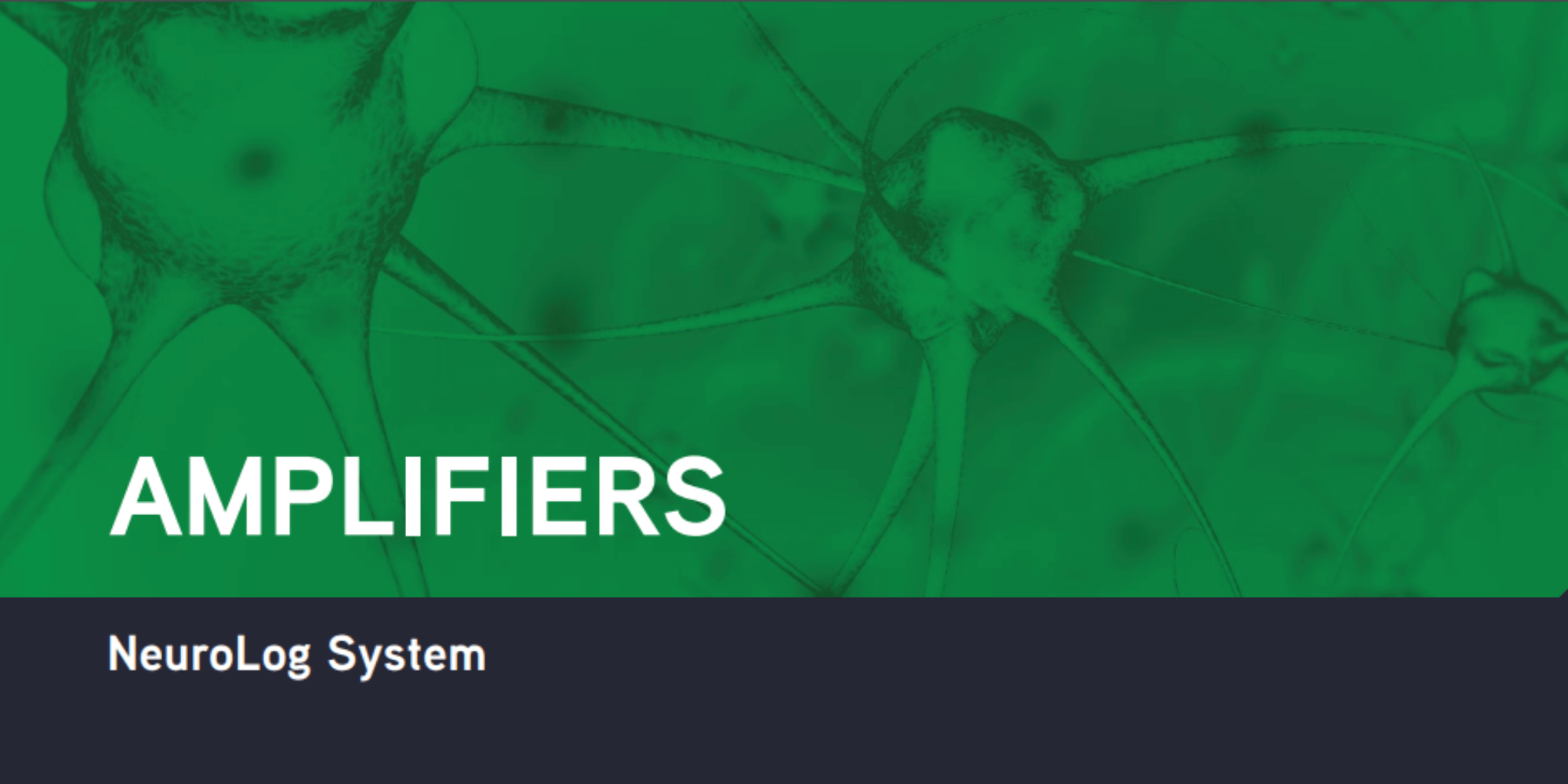NeuroLog System
An amplifier system for all requirements
One of the main benefits of the NeuroLog System is its versatility.
This is especially true with respect to its signal amplification capabilities.
At the heart of the system, is a large collection of pre-amplification and amplification modules. These amplifiers are designed for a diverse range of electrophysiological recording applications, including intracellular and extracellular microelectrode recordings, multi-channel EMG, EEG and ECG recordings, and recordings from strain gauges and pressure transducers.
With this level of choice, it’s possible for you – as the user – to develop a bespoke system, specific to your research needs. But it can also make it difficult to identify the best modules.
Many different combinations are possible. So to set you on the right track, here our in-house specialists list some of the most common configurations.
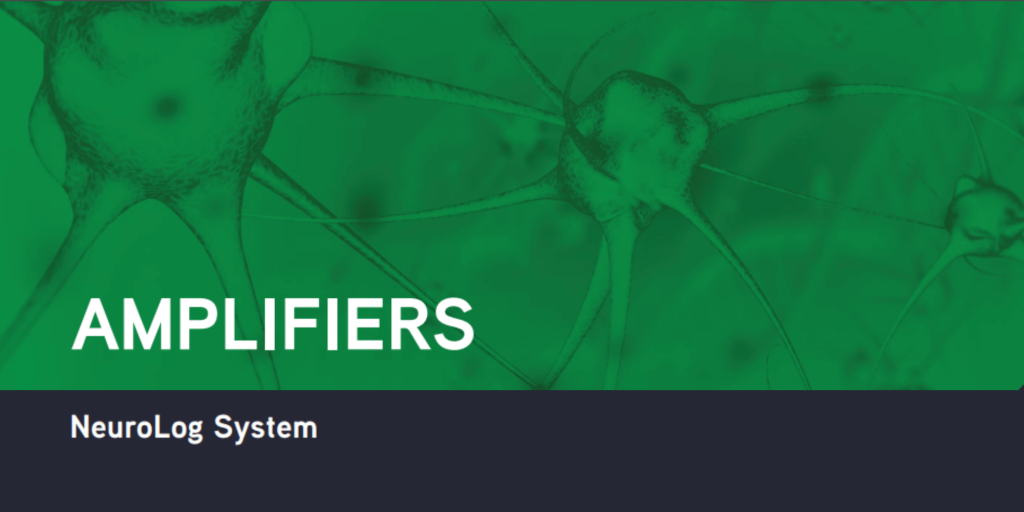
4 common signal amplification applications and the ideal amplifier modules for each
1. Extracellular AC recording
Amplifier modules required: NL100AK PRE-AMPLIFIER HEADSTAGE and NL104A AC PRE-AMPLIFIER
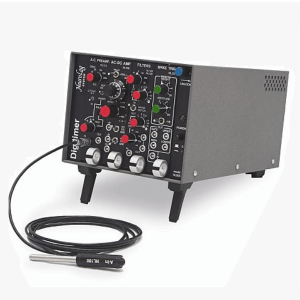 These two modules combine, to provide an excellent low noise amplification and impedance matched system – perfect for extracellular AC recordings from in vitro and in vivo preparations.
These two modules combine, to provide an excellent low noise amplification and impedance matched system – perfect for extracellular AC recordings from in vitro and in vivo preparations.
The NL104A can successfully amplify a signal by x100 to x20k, whilst a 0.1Hz or 10Hz low frequency cut-off filter allows for the removal of DC components. However, if the signal of interest requires further amplification, the NL106 AC/DC AMPLIFIER can be used to boost the gain by up to x100.
Notch, low, and high cut filtering can also be provided by the NL125/6 FILTER.
The analogue output from the NL125/6 can be fed into a data acquisition system. Or alternatively, individual spikes can be discriminated using the NL201 SPIKE TRIGGER module.
2. Intracellular DC recording
Amplifier module required: NL102G DC PRE-AMPLIFIER
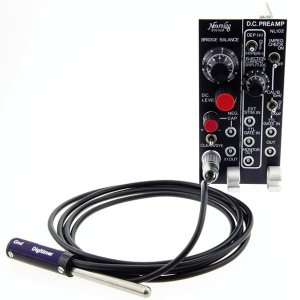 The NL102G is specifically designed for biological recordings and its key features include:
The NL102G is specifically designed for biological recordings and its key features include:
- capacity neutralisation
- current injection (maximum of up to ±100nA possible)
- low leakage current
- low DC drift
- electrode impedance checking
- calibration
- stimulus bridge balance
- DC level adjustment
It also comes supplied with the NL412 PULSE GENERATOR – which essentially, acts as a remote ‘BUZZ’ control, to facilitate electrode impalement. And together, these two modules are particularly suitable for intracellular recording through high resistance fluid-filled electrodes.
If necessary, impedance checking and calibration pulses can be delivered by other NeuroLog modules. Or they can simply be provided by your chosen data acquisition interface or software.
3. Isolated amplification for EMG, EEG and ECG recordings
Amplifier modules required: NL844 4-CHANNEL AC PRE-AMPLIFIER and NL820A ISOLATOR
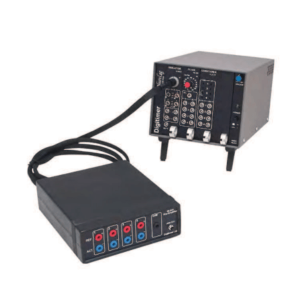 The ideal duo for multi-channel isolated AC recording of physiological signals.
The ideal duo for multi-channel isolated AC recording of physiological signals.
Combined, these two modules provide a wide range of amplification and filter settings.
The NL844 PRE-AMPLIFIER can be positioned near the recording site, reducing the length of the electrode cables and minimising interference. And as the outputs are connected to the NL820A, further amplification of the signals can be selected on a channel by channel basis.
Additional filtering can then be carried out by various other modules, including the NL144 or NL134/5/6 FILTERS – which offer high pass, low pass and notch filter options. The signal can also be conditioned using the NL530, which has facilities for signal gain, filtering and DC offset adjustment.
4. Physiological pressure recording
Amplifier modules required: NL108A PRESSURE AMPLIFIER, plus NL108T2 or NL108T4
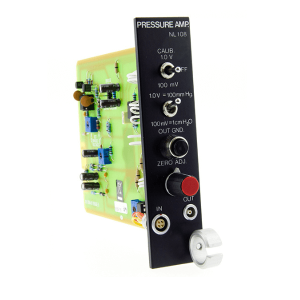 This particular amplifier offers an easy way to monitor physiological pressure changes.
This particular amplifier offers an easy way to monitor physiological pressure changes.
It has two amplification ranges, making it suitable for measuring both high pressures (e.g. blood pressure) and low pressures (e.g. intra-tracheal pressure). And thanks to the addition of a calibrate button, as well as a DC offset control, the user is able to zero the baseline.
The NL108A can be used in combination with either our disposable (NL108T2) or reusable (NL108T4) pressure transducers. But whichever you choose, this will be connected to the amplifier module via an interconnecting lead – with the output feeding into a chart recorder or DAQ interface.
In some instances, the NL109 BRIDGE AMPLIFIER can also be used as an alternative to the NL108A PRESSURE AMPLIFIER. This features user adjustable excitation voltage settings and can be interfaced with isometric force transducers, therefore allowing for wide transducer compatibility.
Still not sure of your ideal NeuroLog system?
Plenty of additional resources can be found throughout our website to help you narrow down the amplifier module options available and make an informed decision.
For example, advice on the best modules for signal amplification – as well as trigger and pulse generation, signal conditioning, filtering and processing and electrical stimulation – can be found in our ‘NeuroLog System Application Notes’. Here you’ll find the categories broken down into more specific applications, with details of the modules typically used for each.
It’s also worth taking a look at our new Life Science Brochure for further product information.
However, if you’re still unsure and struggling to identify the best options, you’re always welcome to contact us. One of our experts will gladly talk you through the features of the amplifier modules available. And once we know a bit more about the intended application, we can help you to build the ideal NeuroLog system for your current research requirements.
Simply give us a call on +44 (0)1707 328347. Or if you prefer, send an email to [email protected] and we’ll respond to your enquiry as soon as possible.
